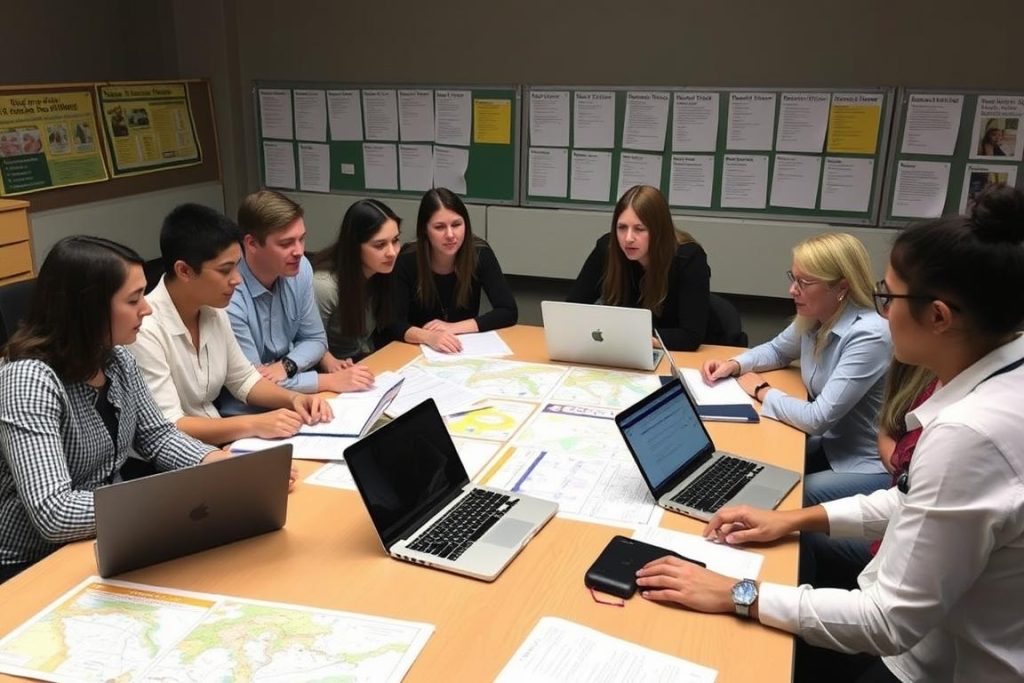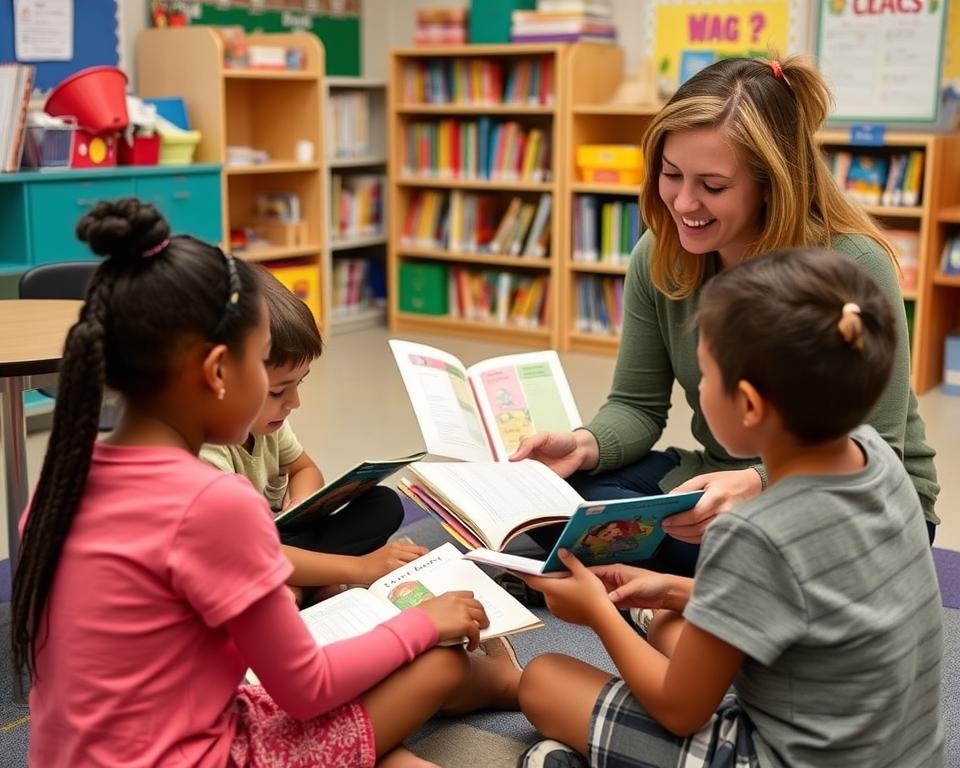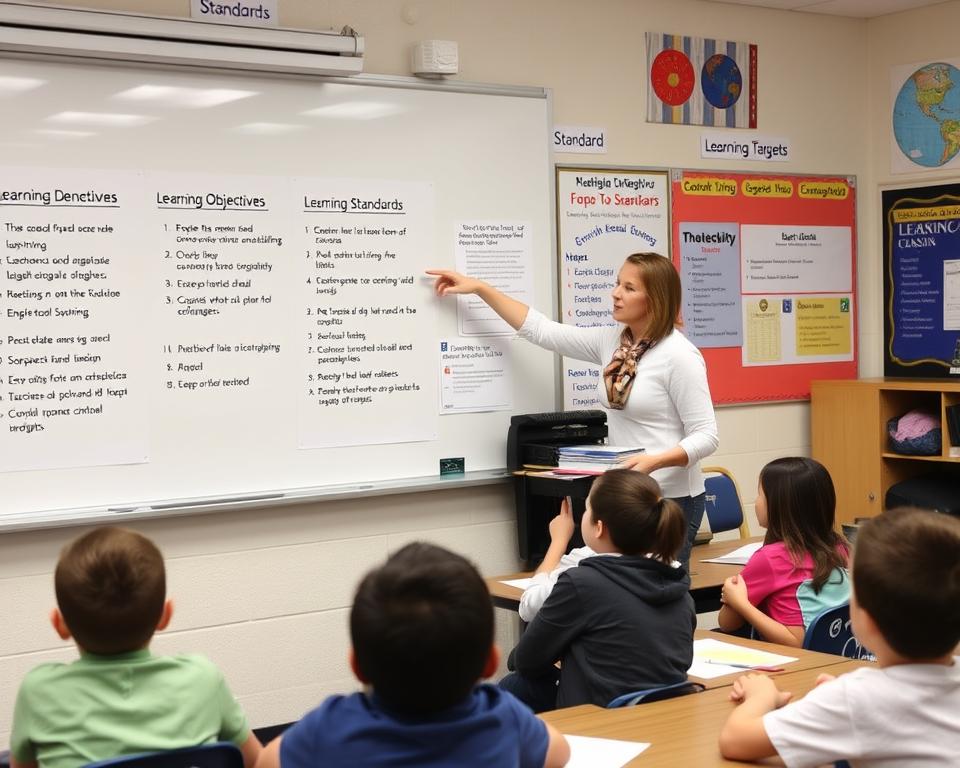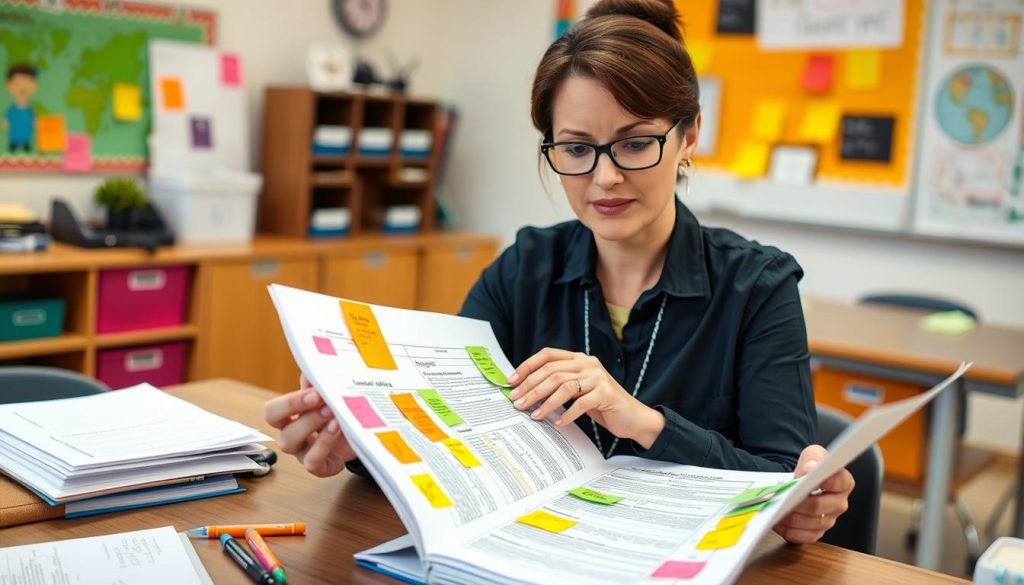Understanding the Foundation of Integrating Standards
Before diving into implementation strategies, it’s important to establish a clear understanding of what standards are and why they matter. Educational standards provide the foundation for what students should know and be able to do at each grade level. They serve as guideposts for curriculum development, instruction, and assessment.
When approaching the task of integrating standards, think of them as the framework upon which you build your teaching practice, not as constraints that limit creativity. Effective teachers view standards as opportunities to create cohesive learning experiences that connect across subject areas and real-world applications.
Your teacher skills in analyzing and interpreting standards are crucial for successful implementation. Take time to thoroughly read and understand the standards for your grade level and subject area. Look for connections between standards and consider how they build upon each other both within and across grade levels.
“Curriculum integration facilitates the pursuit of new knowledge and meaning by transcending the disciplines of knowledge rather than abandoning them.” —James A. Bean
Remember that standards are not the curriculum itself but rather the goals that guide curriculum development. As you enhance your teacher skills in this area, you’ll become more adept at seamlessly weaving standards into engaging lessons that resonate with your students.
For comprehensive resources on understanding and implementing standards in your classroom, explore our professional development offerings designed specifically for K-12 educators.
Curriculum Mapping: The First Step in Integrating Standards

Curriculum mapping is an essential process that helps teachers visualize how standards fit into their teaching throughout the year. This strategic approach to integrating standards allows you to identify gaps, redundancies, and opportunities for cross-curricular connections.
Start by listing all the standards you need to cover and organizing them into logical units or themes. Consider the natural progression of skills and concepts, as well as the time needed for students to achieve mastery. This process requires critical teacher skills in planning and organization but pays dividends in creating a coherent learning experience for students.
Steps for Effective Curriculum Mapping:
- Gather all relevant standards documents for your grade level and subject areas
- Identify the most critical or “power” standards that deserve extra focus
- Organize standards into logical units based on conceptual connections
- Establish a timeline for teaching each unit throughout the school year
- Identify opportunities for cross-curricular connections
- Build in time for review, assessment, and reteaching as needed
When mapping your curriculum, remember that flexibility is key. Your map should serve as a guide, not a rigid schedule. Developing these planning teacher skills allows you to adapt to student needs while still ensuring comprehensive standards coverage.
Ready to take your curriculum mapping to the next level?
Our comprehensive guide provides templates, examples, and step-by-step instructions for creating effective curriculum maps that integrate standards seamlessly.
Cross-Curricular Approaches to Integrating Standards
One of the most effective strategies for integrating standards is taking a cross-curricular approach. This method allows you to address multiple standards simultaneously while creating more meaningful learning experiences for students. Research has consistently shown that students retain information better when it’s presented in connected, relevant contexts rather than isolated silos.
For example, a unit on weather could incorporate science standards about meteorology, math standards for data collection and graphing, literacy standards through reading informational texts and writing weather reports, and social studies standards by examining how weather impacts different communities. This approach maximizes instructional time while deepening student understanding.
Developing cross-curricular teacher skills requires collaboration and creativity. Work with colleagues who teach different subject areas to identify natural connections between your content. This collaborative approach not only strengthens your teaching but also provides students with a more cohesive educational experience.
Benefits of Cross-Curricular Integration:
- Maximizes instructional time by addressing multiple standards simultaneously
- Creates authentic learning experiences that mirror real-world problem-solving
- Helps students see connections between different subject areas
- Increases student engagement through varied approaches to content
- Provides multiple entry points for diverse learners
According to a study published in the Journal of Educational Research, students who participated in integrated curriculum units demonstrated higher achievement and greater engagement compared to those who received traditional, siloed instruction.
Enhancing your teacher skills in cross-curricular planning is an investment that pays off in student achievement and your own professional satisfaction. The ability to see and leverage connections across content areas is a hallmark of master teachers.
Balanced Literacy: A Model for Integrating Standards

Literacy instruction provides an excellent model for how integrating standards can work effectively in practice. The balanced literacy approach demonstrates how various components—reading, writing, speaking, listening, and language—can be woven together to create a comprehensive literacy program that addresses multiple standards simultaneously.
In a balanced literacy framework, teachers create a schedule that includes various instructional routines such as read-alouds, shared reading, guided reading, independent reading, writing workshops, and word study. Each of these routines addresses different literacy standards while providing students with multiple opportunities to practice and apply skills in different contexts.
Developing teacher skills in balanced literacy requires understanding how different instructional routines serve different purposes. For example, shared reading allows for modeling and explicit instruction, guided reading provides opportunities for differentiated support, and independent reading builds fluency and stamina.
Key Components of Balanced Literacy:
Teacher-Directed Components:
- Read-alouds
- Shared reading
- Mini-lessons
- Guided practice
- Word study instruction
Student-Centered Components:
- Independent reading
- Literacy centers/stations
- Independent writing
- Collaborative discussions
- Self-selected projects
The balanced literacy model exemplifies the gradual release of responsibility framework: “I do” (teacher modeling), “we do” (guided practice), and “you do” (independent application). This structure ensures that students receive the scaffolding they need to master standards while gradually developing independence.
While this example focuses on literacy, the same principles can be applied to other subject areas. The key teacher skills involve understanding how to structure learning experiences that provide the right balance of explicit instruction, guided practice, and independent application.
Project-Based Learning: Authentic Integrating Standards

Project-based learning (PBL) offers a powerful approach to integrating standards in a way that engages students in authentic, meaningful work. Rather than teaching standards in isolation, PBL allows students to apply multiple standards while solving real-world problems or creating products for authentic audiences.
Effective implementation of PBL requires specific teacher skills in designing projects that naturally incorporate standards while maintaining student interest and ensuring academic rigor. The key is to start with the standards you want to address, then design a driving question or challenge that will require students to demonstrate mastery of those standards.
For example, a project where students design a community garden could incorporate science standards related to plant growth, math standards for measurement and area, literacy standards through research and proposal writing, and social studies standards by examining food security in the community.
Elements of Effective Project-Based Learning:
- Driving question or authentic challenge that engages student interest
- Sustained inquiry over an extended period
- Student voice and choice in approach and final products
- Reflection on learning throughout the process
- Critique and revision based on feedback
- Public presentation of work to authentic audiences
Research from the Buck Institute for Education shows that well-implemented PBL can lead to greater content knowledge, improved critical thinking skills, and increased engagement compared to traditional instructional approaches.
Developing your teacher skills in project design and facilitation takes time, but the results are worth the effort. Students engaged in well-designed projects often exceed expectations because they’re motivated by the authentic nature of the work and the opportunity to make choices about their learning.
Enhance Your Project-Based Learning Skills
Discover how to design and implement effective project-based learning experiences that seamlessly integrate multiple standards while engaging students in meaningful work.
Assessment Strategies for Integrating Standards

Assessment plays a crucial role in integrating standards effectively. Well-designed assessments not only measure student progress but also guide instruction and provide valuable feedback to both teachers and students. Developing strong assessment teacher skills is essential for ensuring that your standards-based curriculum is having the intended impact.
When designing assessments, start by clearly identifying which standards you’re measuring. Create a balanced assessment plan that includes formative assessments (ongoing checks for understanding), summative assessments (end-of-unit evaluations), and performance tasks (authentic demonstrations of learning).
Types of Standards-Based Assessments:
Formative Assessments
- Exit tickets
- Quick writes
- Observation checklists
- Digital response tools
- Self-assessments
Summative Assessments
- End-of-unit tests
- Culminating projects
- Written essays
- Presentations
- Portfolio reviews
Performance Tasks
- Real-world problem solving
- Authentic products
- Demonstrations
- Debates/discussions
- Simulations
Rubrics are particularly valuable tools for standards-based assessment. A well-designed rubric clearly communicates expectations, provides specific feedback, and helps students understand what mastery of standards looks like. Creating effective rubrics is an important teacher skill that supports both instruction and assessment.
Remember that assessment should drive instruction. Use assessment data to identify which standards need additional attention and which students need additional support or enrichment. This data-informed approach is a hallmark of effective teacher skills in standards implementation.
Professional Development for Integrating Standards

Continuous professional growth is essential for effectively integrating standards into your teaching practice. As standards evolve and new research emerges about effective teaching practices, ongoing professional development helps you stay current and refine your approach.
Investing in your teacher skills through professional learning communities, workshops, courses, and self-directed study pays dividends in your classroom practice. Consider forming a study group with colleagues to examine standards documents together, share implementation strategies, and provide feedback on each other’s lessons.
Effective Professional Development Approaches:
- Collaborative planning with grade-level or subject-area teams
- Lesson study cycles where teachers observe and refine lessons together
- Online courses focused on standards implementation
- Conferences and workshops with follow-up application activities
- Coaching relationships with experienced mentors
- Action research projects in your own classroom
The ULINCS (Using Literacy Integration for Communicating Scientifically) project, highlighted in research from the University of Northern Colorado, demonstrated that sustained professional development in science, literacy, and mathematics led to increased student achievement. Teachers who participated in the project were able to synthesize standards effectively and create integrated learning experiences that improved outcomes across multiple subject areas.
Developing your teacher skills through professional development isn’t just about attending workshops—it’s about actively applying what you learn to your classroom practice. Set specific goals for implementing new strategies, collect evidence of their impact, and reflect on what works and what needs adjustment.
Elevate Your Standards Integration Skills
Access professional development resources designed specifically to help K-12 teachers effectively integrate standards across the curriculum.
Practical Tips for Daily Integrating Standards

While big-picture planning is essential, the day-to-day implementation of standards happens in the small decisions you make about instruction, activities, and assessment. Here are practical tips for integrating standards into your daily teaching practice:
Planning and Preparation:
- Post learning targets derived from standards in student-friendly language
- Reference standards in your lesson plans to maintain focus
- Create a visual map of standards coverage to track progress
- Use backward design: start with standards, then plan assessments and activities
- Identify connections between standards to create integrated lessons
Classroom Implementation:
- Begin lessons by explicitly connecting activities to learning targets
- Use formative assessment to check for understanding of standards
- Provide exemplars that demonstrate mastery of standards
- Differentiate instruction to help all students meet standards
- End lessons with reflection on progress toward learning targets
These practical strategies help you develop essential teacher skills for standards implementation. Remember that effective integration isn’t about covering standards—it’s about helping students master them. This requires thoughtful planning, clear communication, and responsive teaching.
One particularly effective approach is to create “power standards” charts that identify the most critical standards and track student progress toward mastery. This visual representation helps both you and your students see growth over time and identify areas that need additional attention.
Developing these practical teacher skills for standards implementation takes time and practice. Start with small changes to your current practice, then gradually incorporate more sophisticated approaches as your comfort level increases.
Overcoming Challenges in Integrating Standards

Even experienced educators face challenges when integrating standards into their curriculum. Acknowledging these challenges and developing strategies to address them is an important part of growing your teacher skills in this area.
Common Challenges
- Too many standards to cover in limited instructional time
- Standards that seem disconnected from students’ interests and experiences
- Pressure to prepare for standardized assessments
- Balancing depth versus breadth in content coverage
- Finding high-quality resources aligned to standards
Effective Solutions
- Prioritize “power standards” that have the greatest impact
- Connect standards to authentic, relevant contexts
- Integrate test preparation naturally into meaningful learning
- Focus on depth of understanding for key concepts
- Collaborate with colleagues to share and develop resources
One of the most valuable teacher skills you can develop is the ability to adapt standards to meet the needs of your specific students while maintaining the integrity of the learning goals. This might mean providing additional scaffolding, creating culturally relevant connections, or finding alternative ways for students to demonstrate mastery.
Remember that standards are the destination, not the journey. Your expertise as an educator lies in designing learning experiences that help your students reach those destinations in ways that are engaging, meaningful, and appropriate for their needs.
Developing problem-solving teacher skills for addressing these challenges is part of your professional growth. Seek out colleagues who have found successful approaches, and don’t hesitate to adapt and modify strategies to fit your unique teaching context.
Conclusion: The Journey of Integrating Standards
Integrating standards into your curriculum is not a one-time event but an ongoing journey of professional growth and refinement. As you develop your teacher skills in this area, you’ll find that standards become less of an external mandate and more of an integral part of how you think about teaching and learning.
The most effective educators view standards not as constraints but as opportunities to create coherent, meaningful learning experiences for their students. By approaching standards integration with creativity, collaboration, and a commitment to continuous improvement, you can design curriculum that both meets academic requirements and inspires a love of learning.
Remember that the ultimate goal is not simply to cover standards but to help students develop the knowledge, skills, and dispositions they need for future success. Your teacher skills in translating standards into engaging learning experiences are what make this possible.
Ready to Transform Your Approach to Standards?
Take the next step in your professional journey with our comprehensive resources for integrating standards effectively across the curriculum.




